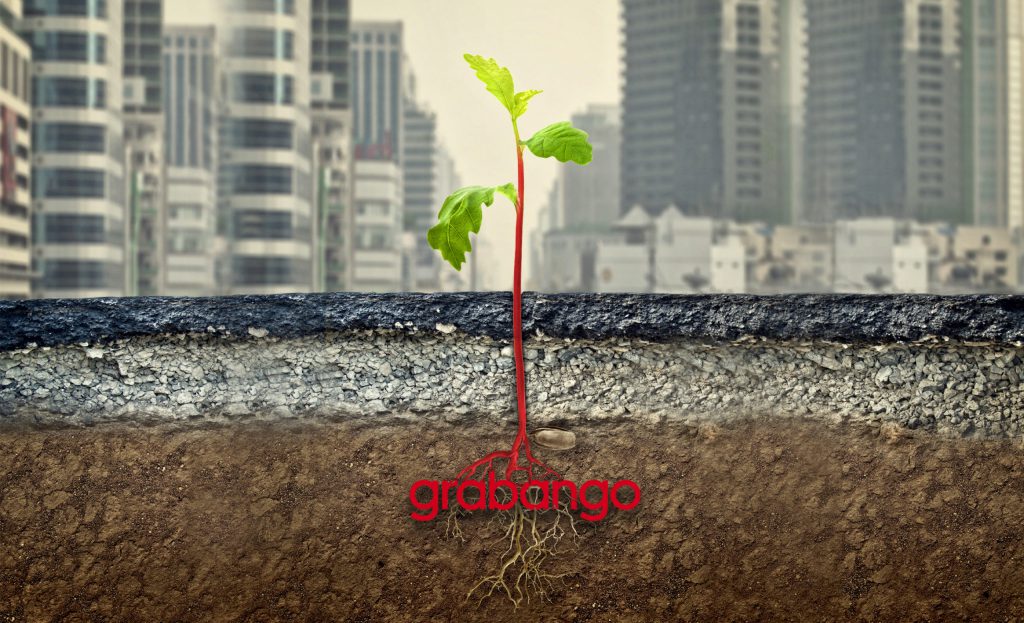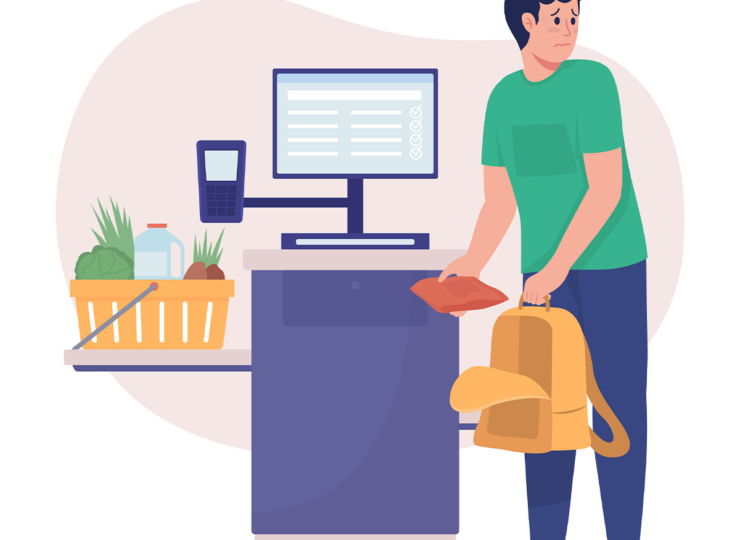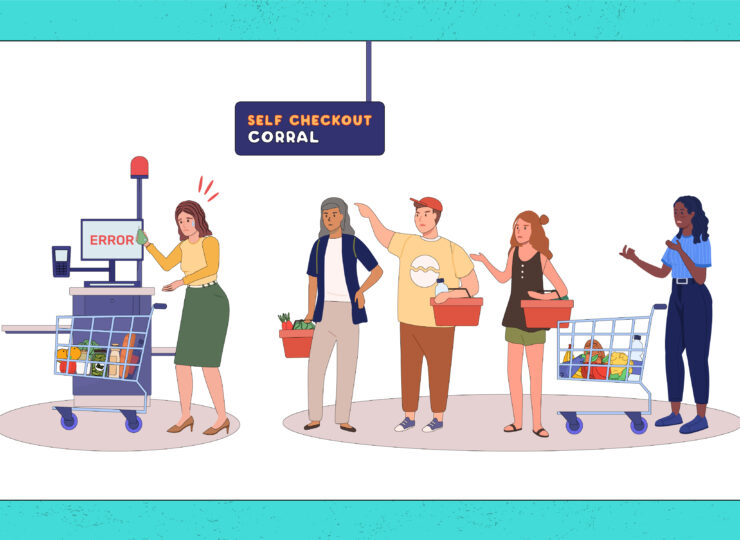American ‘food deserts’ are getting worse. Here’s how technology will fix them.
By Will Glaser

For years, millions of Americans — an estimated 8% of the population — have been living without adequate access to healthy, nutritious food. It’s an issue exacerbating a wide array of health problems, including obesity, diabetes, and cardiovascular disease.
Now, the issue has gotten more complicated. As Voice of America explains, people who would normally have taken a bus to get to a supermarket now face the risk of exposing themselves to COVID-19. The pandemic is worsening “food deserts” for 23.5 million people.
The U.S. Department of Agriculture (USDA) defines “food deserts” as low-income neighborhoods having “a substantial number or share of residents with low levels of access to retail outlets selling healthy and affordable foods.” These areas also typically have a higher percentage of minority residents.
With limited transportation options to reach stores 30 or more miles away, residents are more likely to consume the food they can find nearby. With no grocery stores, the remaining options are often limited to liquor store snack food and fast food.
Why do food deserts proliferate? Traditional explanations have ranged from the theory that retailers don’t want to open new stores in some neighborhoods, to the peculiar notion that low-income people prefer an unhealthy diet. But through my work at Grabango, I’ve been meeting and speaking with heads of grocery store chains, digging into the biggest obstacles they face with regards to opening and sustaining stores in food deserts. I’ve found that one factor in particular outweighs all the others, and it’s one that my team has been working to solve.
Low Margins Sliced by Shrinkage
To understand the dynamic, we need first to understand how low the margins are for grocery stores.
For every dollar a consumer pays, the grocer spends about 70 cents to buy the food at wholesale prices. Then, they divide up the rest for rent, electricity, labor, insurance, equipment, and so on. This leaves just a few cents of potential profit.
To make matters worse, stores see some of that margin stolen every day. The biggest contributors to this so-called “shrinkage” are employee fraud and consumer shoplifting.
While operational issues like employee errors or damaged goods are problems supermarkets work to address through greater efficiency, many supermarkets have found it harder to counteract theft. Store managers often don’t even know who’s stealing what.
It’s the theft, and the fear of it, that most grocers tell us is their biggest concern in opening up new stores.
How Shoplifting Happens
Shoplifting mostly isn’t what people might imagine. It isn’t a guy walking into the store and walking out with a bottle of gin tucked into his jacket. Sure, that happens, but if that same guy came into his local store twice a week and appeared to leave empty handed, he’d look suspicious and would eventually be questioned.
More often, theft happens through “partial shoplifting.” For example, someone stashes the gin in his jacket before legitimately buying a candy bar. To the store staff, he’s recognized as a kindly old gentleman with a sweet tooth. No one knows that he’s also the person stealing 100 bottles of booze a year.
Employee fraud, meanwhile, comes in a variety of forms. A common one is called “sweethearting,” where a cashier fails to scan certain items – often, the most expensive items like their friend’s four T-bones steaks, and then meet up later for a celebratory BBQ.
While theft can cost grocers about two cents on the dollar in a typical store, for some stores, this loss can be substantially more. And because margins are so tight, even a slight increase in theft can make it unprofitable to operate stores in some locations.
Neighborhood Effects
Business leaders have told us that they’ve faced higher rates of theft in many low-income areas. Furthermore, given the institutional memory of past experiences (some of which have led to store closures), they’re understandably reluctant to open new stores if they fear they may lose money. From everything I’ve seen, this theft-based loss in profitability is the leading economic cause of food deserts.
To be clear, a neighborhood having lower incomes does not necessarily mean it will have higher crime rates. The Courier-Journal in Louisville, Kentucky, investigated this as part of a series on food insecurity, with support from the Center for Health Journalism at USC Annenberg. Among its findings: two grocery stores in the area had roughly the same number of crime reports, even though the poverty levels in those two neighborhoods were very different, with one area at 37%, and the other at 7%.
Crime reports and shrinkage are necessarily different, given that the disappearance of items over time doesn’t always lead to a police report. Still, a study by California Food Policy Advocates did observe the correlation that “stores in low-income locations may experience a higher level of ‘shrinkage’”.
In stores, a very small number of bad actors can have an outsized impact. The difference between a low-crime and a high-crime store might just be a few dozen people out of a community of thousands. The actions of those few, however, can and do drive stores out of business — and out of a neighborhood. The result is that the vast majority of honest members of that community suffer a life-altering loss. Shoplifters who may think they’re committing a victimless crime might indirectly be stealing life and vitality from an entire community.
Technological Solution
By allowing stores to automatically know both when an item is taken off a shelf and who has taken it, Grabango’s technology can be utilized to combat the problem of theft that’s plaguing grocery stores.
With the checkout-free system we’ve built at Grabango (and with a similar one from Amazon Go), people shop for what they want and are billed automatically. There’s no longer a need to wait for each item to be dragged across a barcode scanner or keyed into a register. The point-of-sale system automatically bills shoppers for what they leave with.
In doing so, these systems virtually eliminate theft. Shoplifters must go elsewhere. Workers tempted to steal from their employer learn they can no longer get away with it. Dishonest people are systematically thwarted.
These checkout-free systems return the 2% – 8% of revenue lost to the store every day. These savings are big enough to more than pay for the installation of the technology. What’s more is that the savings are greater where theft is higher. The very stores that had previously struggled to stay open can actually reduce prices for the consumer. Chains that had been reluctant to operate in certain neighborhoods can reinvest with the expectation that their new stores will do just as well as anywhere else.
The Time is Now
The solution is at hand. Several chains are planning broad rollouts of this new technology. They’ll have a tremendous competitive advantage over stores that don’t invest in checkout-free installations for their shoppers, based on the streamlined checkout experience alone. An additional benefit is that former food deserts will see overall improvements in community health and, as a result, economic revitalization. By allowing full-service grocery stores to sprout up in areas long abandoned, irrigating food deserts with checkout-free technology will produce an urban spring.


